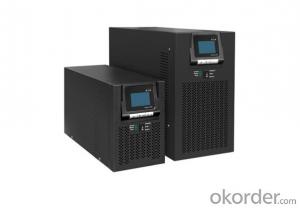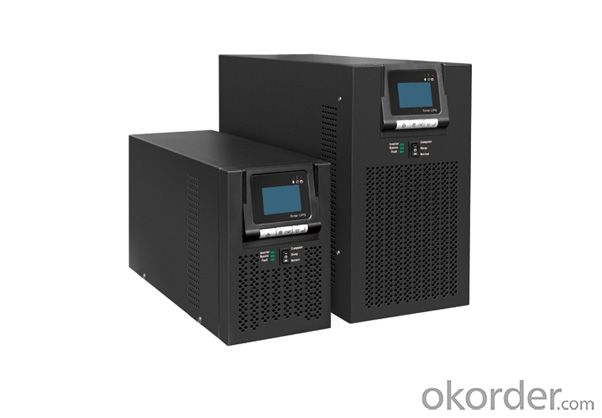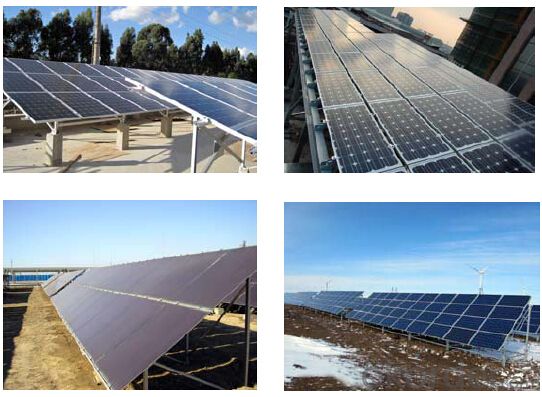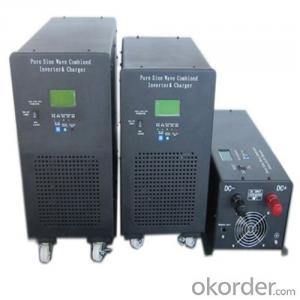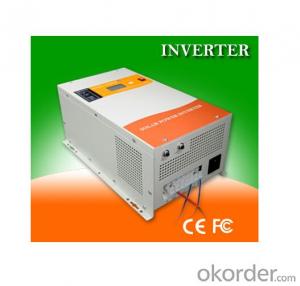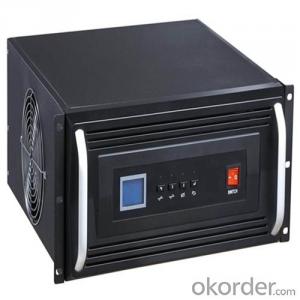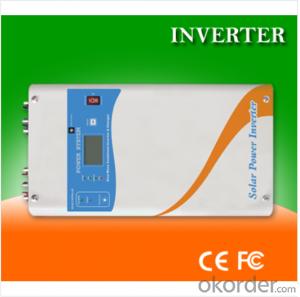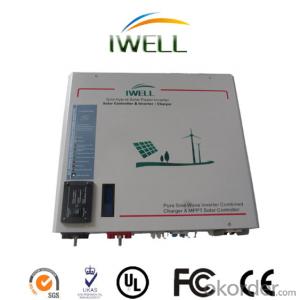Solax Solar Inverter Pure Sine Wave Inverter with Built-in MPPT Solar Charger Controller
- Loading Port:
- Guangzhou
- Payment Terms:
- TT OR LC
- Min Order Qty:
- 10 unit
- Supply Capability:
- 10000 unit/month
OKorder Service Pledge
OKorder Financial Service
You Might Also Like
Product features
Pure sine wave inverter
Built-in MPPT solar charger controller
Selectable input voltage range for home appliances and personal omputers
Selectable charging current based on applications
Configurable AC/Solar input priority
Compatible to mainis voltage or generator power
Auto restart while AC is recovering
Overload and short circuit protection
Smart battery charger design for optimized battery performance
Cold start function
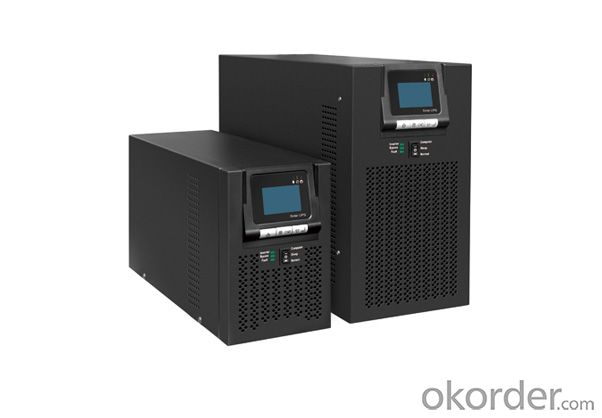
Product Parameter
Q 1. what's the payment term?
A. We accept TT,30% deposit and 70% balance agaisnt copy of BL
Q 2. how's the delivery time ?
A. usually it will take about 25 days for production
Q 3. tell me the standard of package?
A. For the small capacity, it use carton, but for big capacity, we will use strong wooden case for protection.
Q 4. what kind of material of transformer?
A. we have two types, one 100% copper and the other is copper with aluminum.It depends on your requirment. In fact,those two have no difference if normal work well. Only except the longlife. Copper is better and also higer price.
Q 5.Could you offer Form A or C/O ?
A. It totally not a problem. We can prepare relative documents to forgin affairs office or other office to apply for this certificate.
Q 6.Would you accept to use our logo ?
A.If you have good quantity,it absolute no problem to do OEM.
Q 7.We want to know month capacity.
A. It depends on which model.For example for relay type small capacity , month capacity can reach near 20000pcs and big capacity near 3000pcs.
Q 8.Where is your market?
A. Our products are popular in russia, indonisia, Philippines,italy, america, pakistan and so on.Some of them are our regular customers and some of them are developing. We hope you can join us and make mutural benifit from our cooperation.
Q9. what kind of certificate you have ?
A. Our company already achieve ISO, CCC, and for products, we have CE, TUV, SAA, G58, C10/11,SONCAP, GOST, UL(pending) .

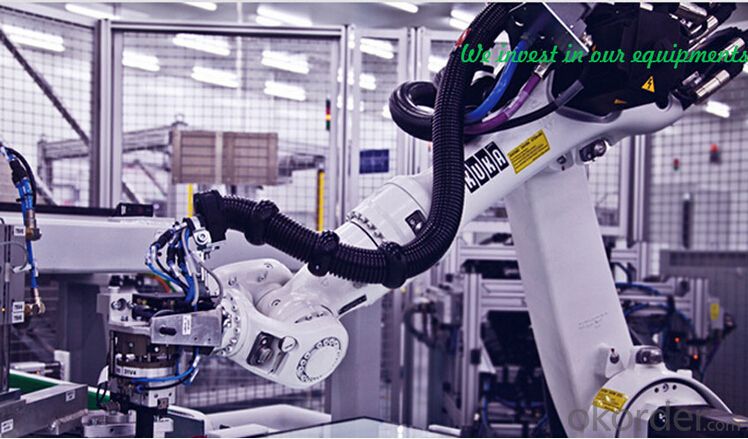
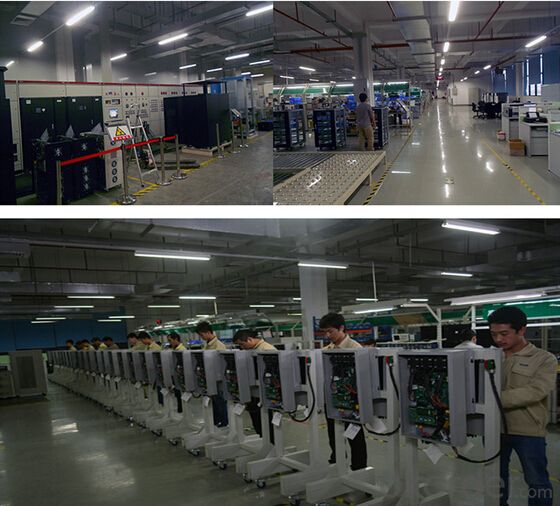
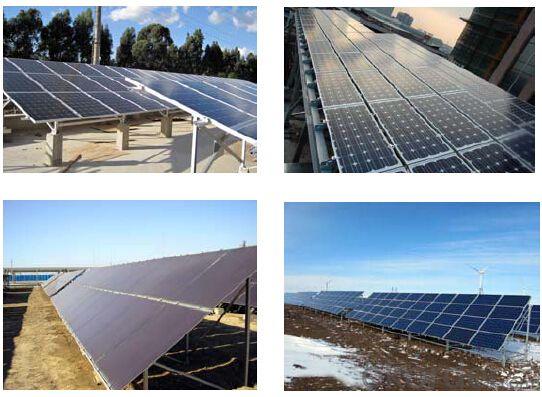
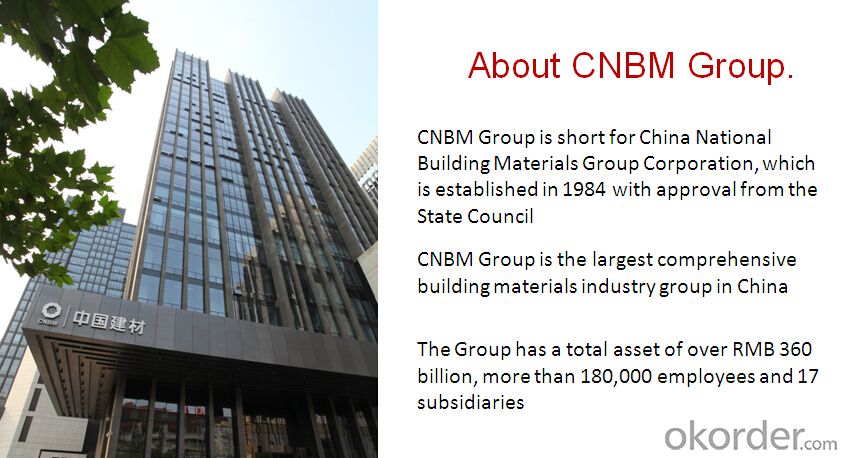

- Q: How do you calculate the efficiency loss due to temperature for a solar inverter?
- To calculate the efficiency loss due to temperature for a solar inverter, you need to determine the temperature coefficient of the inverter. This coefficient represents the rate at which the inverter's efficiency decreases with an increase in temperature. Once you have the temperature coefficient, you can calculate the efficiency loss by multiplying it with the difference between the actual operating temperature and the reference temperature. The reference temperature is typically the standard test condition temperature, which is usually around 25 degrees Celsius. The formula to calculate the efficiency loss is as follows: Efficiency Loss = Temperature Coefficient × (Operating Temperature - Reference Temperature) By plugging in the appropriate values, you can determine the efficiency loss due to temperature for a solar inverter.
- Q: Can a solar inverter be used in systems with different module efficiencies?
- Yes, a solar inverter can be used in systems with different module efficiencies. Solar inverters are designed to convert the DC power generated by solar panels into AC power, regardless of the module efficiency. The inverter's main function is to optimize the power conversion process and ensure compatibility between the solar panels and the electrical grid. As a result, it can accommodate varying module efficiencies and still function efficiently.
- Q: Can a solar inverter be integrated with a smart home system?
- Yes, a solar inverter can be integrated with a smart home system. Many modern solar inverters have built-in communication capabilities, such as Wi-Fi or Ethernet, which allow them to connect to a smart home system. This integration enables homeowners to monitor and control their solar power production and energy consumption conveniently through a centralized smart home platform. They can track energy production, set energy usage preferences, and even automate certain functions based on available solar power.
- Q: How do you monitor the performance of a solar inverter?
- To monitor the performance of a solar inverter, several methods can be employed. Firstly, real-time monitoring systems can be installed that collect data on various parameters such as power output, voltage, current, and temperature. These systems often include data loggers or communication modules that transmit the information to a central monitoring station or cloud-based platform. Additionally, regular inspections and maintenance checks can be conducted to visually inspect the inverter for any signs of damage, loose connections, or overheating. Monitoring the inverter's efficiency over time, comparing the actual power output with the expected output based on solar irradiance and temperature, can also provide insights into its performance. Furthermore, some solar inverters come with built-in monitoring capabilities, allowing users to access performance data through a web-based interface or mobile app. This provides real-time and historical data, including energy production, system faults, and alerts, enabling users to identify and address any issues promptly. Overall, a combination of real-time monitoring systems, regular inspections, and utilizing inverter-specific monitoring features can effectively monitor the performance of a solar inverter.
- Q: Can a solar inverter be used in systems with different module orientations?
- Yes, a solar inverter can be used in systems with different module orientations. Solar inverters are designed to convert the direct current (DC) generated by the solar panels into alternating current (AC) that can be used to power electrical devices. They are compatible with various module orientations, including both portrait and landscape orientations. However, it is important to consider the efficiency and performance of the solar system when installing modules with different orientations, as it may affect the overall energy production.
- Q: Can a solar inverter be used in a remote location without access to the grid?
- Yes, a solar inverter can be used in a remote location without access to the grid. Solar inverters are designed to convert the direct current (DC) generated by solar panels into alternating current (AC) that can be used to power electrical devices. In off-grid systems, solar inverters are often combined with batteries to store excess energy generated during the day and provide power during the night or when sunlight is limited. This allows for the utilization of solar energy in remote locations where grid access is not available.
- Q: How does a solar inverter handle voltage and frequency regulation?
- A solar inverter handles voltage and frequency regulation by converting the direct current (DC) generated by solar panels into alternating current (AC) that is suitable for use in homes and businesses. It ensures that the voltage and frequency of the AC output are within the acceptable range set by the grid or electrical appliances. This is achieved through the use of control circuitry and algorithms that continuously monitor and adjust the DC input to maintain a stable and consistent AC output.
- Q: What is the role of a solar inverter in preventing electrical hazards?
- The role of a solar inverter in preventing electrical hazards is to convert the direct current (DC) electricity produced by solar panels into alternating current (AC) electricity that can be safely used in homes or businesses. It ensures that the electrical output from the solar panels is compatible with the electrical grid, reducing the risk of overloading or short circuits that can lead to electrical hazards such as fires or electrocution. Additionally, solar inverters have built-in safety features like ground fault protection and rapid shutdown mechanisms, which further minimize the chances of electrical accidents.
- Q: How does a solar inverter handle high temperatures?
- A solar inverter handles high temperatures by incorporating various cooling mechanisms such as heat sinks, fans, and thermal management systems. These components help dissipate heat generated during the inverter's operation, preventing overheating and ensuring optimal performance even in hot climates.
- Q: Can a solar inverter be used in extreme weather conditions?
- Yes, solar inverters are designed to withstand extreme weather conditions. They are built to be durable and resistant to factors such as temperature fluctuations, humidity, and harsh weather elements. However, it is always recommended to consult the manufacturer's guidelines to ensure proper installation and protection measures are in place for specific weather conditions.
Send your message to us
Solax Solar Inverter Pure Sine Wave Inverter with Built-in MPPT Solar Charger Controller
- Loading Port:
- Guangzhou
- Payment Terms:
- TT OR LC
- Min Order Qty:
- 10 unit
- Supply Capability:
- 10000 unit/month
OKorder Service Pledge
OKorder Financial Service
Similar products
Hot products
Hot Searches
Related keywords
